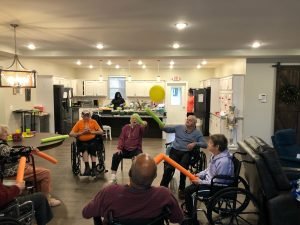
The landscape of healthcare is rapidly evolving, and one of the most transformative trends in recent years is the integration of virtual medical consultations and healthcare services within assisted living facilities. This technological shift is not only enhancing the quality of care provided to residents but also revolutionizing the way healthcare professionals interact with and cater to their patients. In this article, we delve into the rise of virtual medical consultations in assisted living facilities, exploring the benefits, challenges, and potential it holds for the future of elder care.
The Evolution of Healthcare in Assisted Living Facilities
Assisted living facilities have long been associated with providing seniors a comfortable and supportive environment, allowing them to maintain their independence while receiving the necessary care. Traditionally, healthcare services in these facilities have involved in-person visits to physicians and medical professionals. However, the advent of technology has led to a paradigm shift, allowing residents to access medical consultations and services through virtual platforms.
Benefits of Virtual Medical Consultations
Convenience and Accessibility: Virtual medical consultations eliminate the need for residents to travel to healthcare facilities, saving time, and energy, and reducing stress. This is especially valuable for individuals with mobility issues or chronic conditions.
Timely Healthcare: Virtual consultations enable healthcare providers to quickly attend to residents’ needs, potentially preventing complications or exacerbation of health conditions.
Continuity of Care: Residents can maintain a consistent relationship with their healthcare providers, fostering a sense of trust and familiarity that positively impacts their overall well-being.
Reduced Healthcare Costs: Virtual consultations can be cost-effective for both residents and facilities, as they minimize transportation expenses and the need for extensive on-site medical staff.
Preventive Care: With regular virtual check-ins, healthcare professionals can monitor residents’ health proactively, identifying potential issues and intervening early.
Challenges and Considerations
Technological Barriers: While technology adoption is growing, some residents might not be comfortable with or have access to the necessary devices and internet connectivity for virtual consultations.
Privacy and Security: Ensuring the confidentiality of medical information during virtual consultations is crucial. Assisted living facilities must invest in secure platforms and educate both residents and staff about privacy measures.
Physical Examinations: Some medical assessments require physical examinations that cannot be conducted virtually. Balancing virtual consultations with in-person visits becomes essential for comprehensive care.
Personal Connection: The human touch of in-person interactions can be challenging to replicate in virtual settings, potentially impacting the emotional well-being of residents.
The Road Ahead
The integration of virtual medical consultations and healthcare services in assisted living facilities is a transformative step forward. To harness its full potential, stakeholders must address challenges while capitalizing on its benefits. This includes investing in user-friendly technology, offering training to residents, and implementing protocols to ensure privacy and security.
As technology continues to advance, we can anticipate further developments such as remote monitoring devices, AI-powered diagnostics, and telehealth platforms tailored for senior care. The integration of virtual reality (VR) and augmented reality (AR) might even facilitate immersive virtual healthcare experiences that bridge the gap between virtual and physical consultations.
Conclusion
The rise of virtual medical consultations and healthcare services within assisted living facilities marks a significant stride toward enhancing the quality of care for residents. While challenges exist, the benefits are clear: convenience, timely healthcare, cost savings, and preventive care. As the healthcare landscape continues to evolve, embracing these technological advancements can create a harmonious blend of personalized attention and cutting-edge innovation, ultimately leading to improved well-being and quality of life for residents in assisted living facilities.





No comment yet, add your voice below!